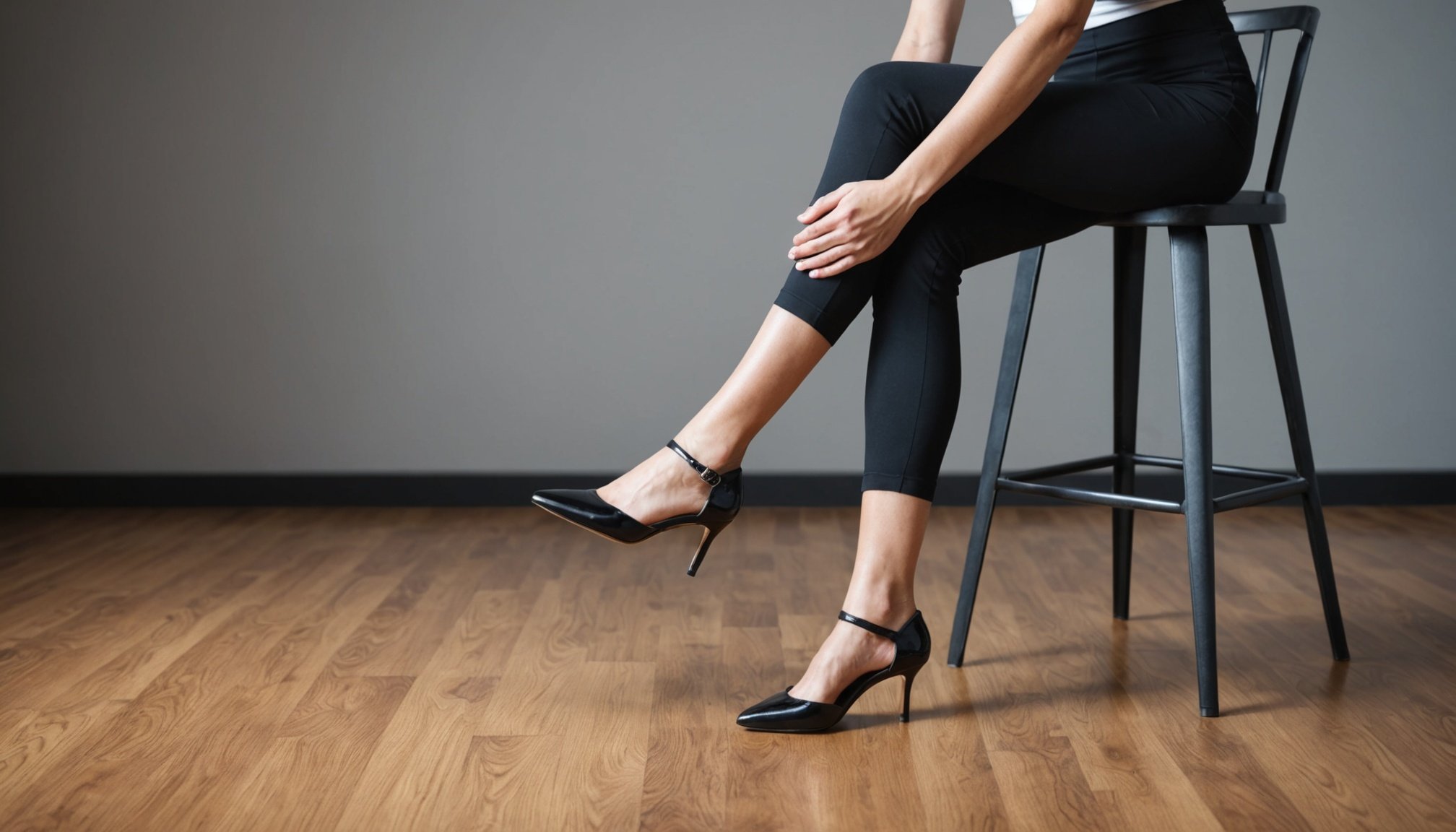Essential Exercises for Stronger Ankles
Wearing high heels can be a balancing act, both literally and figuratively. To ensure you’re steady on your feet, incorporating ankle strengthening exercises into your routine is crucial. These exercises not only enhance high heel support but also play a significant role in addressing stability concerns and mitigating injury risks.
Strong ankles contribute substantially to overall stability, serving as a foundation for the rest of your body. This is particularly important for high heel aficionados, as the elevation changes the body’s natural balance, taxing the ankles more than flat footwear would. Robust ankle muscles work to prevent injury by withstanding the stresses and strains associated with everyday movements in heels.
Also read : Elevate your professional wardrobe: chic blazer styling tips for any occasion
The cornerstone of any ankle-strengthening regimen involves three key exercises:
-
Calf Raises: Boost strength in the lower leg and improve ankle support.
In parallel : Uncover the benefits of adding organic cotton to your fashion lineup: a sustainable choice for style and comfort
-
Ankle Circles: Enhance flexibility and mobility, which is critical for maneuvering in high heels.
-
Resistance Band Exercises: Increase both strength and range of motion, providing comprehensive benefits for lasting support.
Incorporating these exercises into your weekly routine not only supports high heel wear but also safeguards against potential injuries, leaving you ready to strut with confidence.
Exercise 1: Calf Raises
Engaging in calf raises is a straightforward way to strengthen calves and boost overall fitness.
Description and Technique
Calf raises primarily target the calf muscles, comprising the gastrocnemius and soleus. Stand upright and raise your heels, shifting weight onto your toes. Maintain balance, then slowly lower your heels back down. For enhanced engagement, consider using a step or platform to extend the range of motion. Proper form—from maintaining a straight posture to controlled movements—is essential to avoid strain.
Benefits of Calf Raises
Performing calf raises significantly boosts calf muscle strength, contributing to better balance and improved ankle stability. Strong calves are pivotal for activities involving running, jumping, and walking, by promoting efficiency and reducing injury risk. Additionally, they offer aesthetic benefits, leading to more toned and defined lower legs.
Tips for Effective Execution
- Prior to starting, ensure your feet are shoulder-width apart for stability.
- Incorporate weights or dumbbells to increase difficulty and resistance.
- Refrain from bouncing; focus on slow, deliberate movements.
- Consider night-time calf raises on an inclined surface to intensify the workout.
These strategies will help achieve optimal results, ensuring a safe and effective calf workout.
Exercise 2: Ankle Circles
Ankle circles are a simple yet effective exercise focused on improving ankle mobility and flexibility. This exercise serves as a foundation for preventing injuries and enhancing performance in various physical activities.
Description and Technique
To perform ankle circles correctly, sit or stand with your leg extended or foot off the ground. Begin by rotating your ankle in a clockwise direction, creating smooth, controlled circles. Make sure to perform an equal number of rotations in the counterclockwise direction. Aim for about 10-15 circles in each direction to effectively enhance flexibility.
Benefits of Ankle Circles
Engaging in regular ankle circles can lead to significant improvements in flexibility around the joint, thereby reducing the risk of injuries like sprains. This exercise not only enhances ankle mobility but also contributes to better balance and proprioception, making daily activities and sports movements smoother and more efficient.
Variations of Ankle Circles
To add variety, try performing ankle circles with a resistance band for added tension, or incorporate them while balancing on one foot to increase the challenge. Adjusting these exercises can make them more dynamic and emphasize balance and coordination, catering to different fitness levels and goals.
Exercise 3: Single-Leg Balance
Single-leg balance exercises are pivotal for enhancing proprioception and stability training. These exercises help improve your sense of body position and motion, offering significant benefits for overall balance and coordination.
Description and Technique
To perform the single-leg balance, stand upright with feet shoulder-width apart. Slowly lift one foot off the ground, balancing on the other leg. Engage your core and focus on a spot ahead to maintain stability. Aim to hold this position for 30 seconds to a minute, switching legs to ensure both sides are equally challenged.
Benefits of Single-Leg Balance
Incorporating single-leg balance into your routine significantly improves proprioception, which is your body’s ability to sense movement and position. This enhanced capability plays a crucial role in preventing ankle injuries, especially for athletes or individuals with a history of instability. Additionally, it strengthens the muscles around the ankle, knee, and hip, contributing to overall joint health.
Progressions for Increased Challenge
As you advance, consider the following progressions to heighten the challenge:
- Close your eyes while balancing to eliminate visual cues.
- Incorporate movement by reaching with free leg or arm.
- Use unstable surfaces like a balance pad or BOSU ball.
These variations ensure continued improvement and engagement in your stability training journey.
Common Concerns and Solutions
When it comes to ankle exercises, many people have concerns about exacerbating existing conditions or initiating new discomfort. These fears can be managed through appropriate ankle pain management techniques and mindful practices. If you experience persistent ankle pain, it’s crucial to consult a specialist before beginning any vigorous exercise routine.
Addressing the misconceptions surrounding ankle exercises involves understanding how the correct techniques can prevent further injuries. Misalignment and improper footwear, particularly high heels, often contribute to ankle weakness. By integrating focused exercises, you can bolster stability over time.
For those concerned about maintaining fitness and avoiding pain, practical solutions exist. Consider incorporating low-impact movements, such as toe raises and ankle circles, in your daily routine. These simple exercises can be seamlessly practiced during breaks or right after getting out of bed, offering flexibility in execution.
Prevention tips are equally important. Prioritise wearing supportive shoes with adequate cushioning to relieve pressure. Also, include regular stretching sessions targeting the calf and Achilles tendon. This not only aids in ankle pain management but also enhances overall leg mobility. Enjoy the benefits of stronger ankles by gradually building resilience and allowing your body to adapt.










